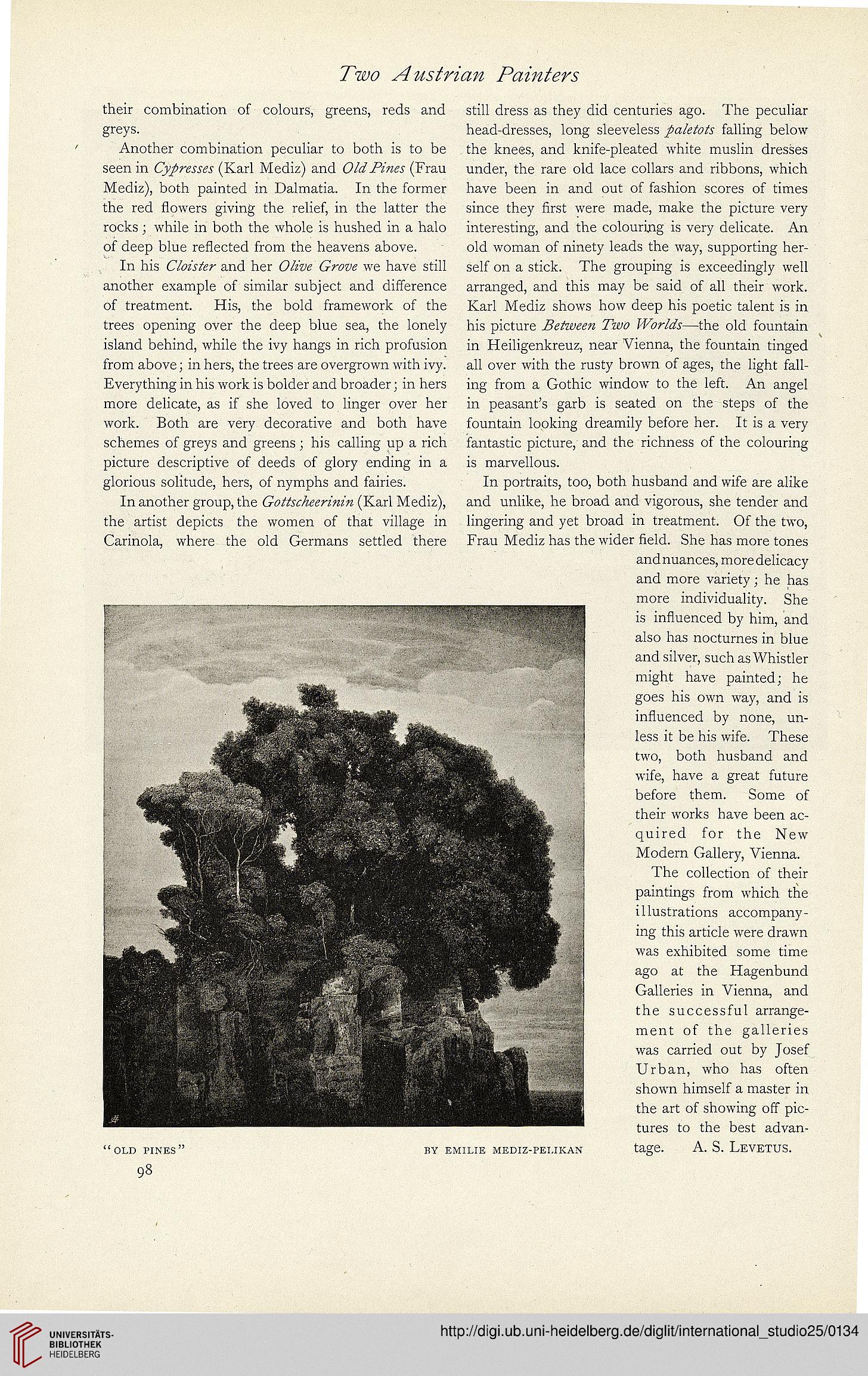their combination of colours, greens, reds and
greys.
Another combination peculiar to both is to be
seen in (Karl Mediz) and CWW73M (Frau
Mediz), both painted in Dalmatia. In the former
the red flowers giving the relief, in the latter the
rocks; while in both the whole is hushed in a halo
of deep blue reflected from the heavens above.
In his CAAAz* and her OAw (77TW<? we have still
another example of similar subject and difference
of treatment. His, the bold framework of the
trees opening over the deep blue sea, the lonely
island behind, while the ivy hangs in rich profusion
from above; in hers, the trees are overgrown with ivy.
Everything in his work is bolder and broader; in hers
more delicate, as if she loved to linger over her
work. Both are very decorative and both have
schemes of greys and greens ; his calling up a rich
picture descriptive of deeds of glory ending in a
glorious solitude, hers, of nymphs and fairies.
In another group, the (Karl Mediz),
the artist depicts the women of that village in
Carinola, where the old Germans settled there
still dress as they did centuries ago. The peculiar
head-dresses, long sleeveless falling below
the knees, and knife-pleated white muslin dresses
under, the rare old lace collars and ribbons, which
have been in and out of fashion scores of times
since they first were made, make the picture very
interesting, and the colouring is very delicate. An
old woman of ninety leads the way, supporting her-
self on a stick. The grouping is exceedingly well
arranged, and this may be said of all their work.
Karl Mediz shows how deep his poetic talent is in
his picture !H77*/<A—the old fountain
in Heiligenkreuz, near Vienna, the fountain tinged
all over with the rusty brown of ages, the light fall-
ing from a Gothic window to the left. An angel
in peasant's garb is seated on the steps of the
fountain looking dreamily before her. It is a very
fantastic picture, and the richness of the colouring
is marvellous.
In portraits, too, both husband and wife are alike
and unlike, he broad and vigorous, she tender and
lingering and yet broad in treatment. Of the two,
Frau Mediz has the wider held. She has more tones
and nuances, more delicacy
and more variety; he has
more individuality. She
is influenced by him, and
also has nocturnes in blue
and silver, such as Whistler
might have painted; he
goes his own way, and is
influenced by none, un-
less it be his wife. These
two, both husband and
wife, have a great future
before them. Some of
their works have been ac-
quired for the New
Modern Gallery, Vienna.
The collection of their
paintings from which the
illustrations accompany-
ing this article were drawn
was exhibited some time
ago at the Hagenbund
Galleries in Vienna, and
the successful arrange-
ment of the galleries
was carried out by Josef
Urban, who has often
shown himself a master in
the art of showing off pic-
tures to the best advan-
tage. A. S. LEVETUS.




